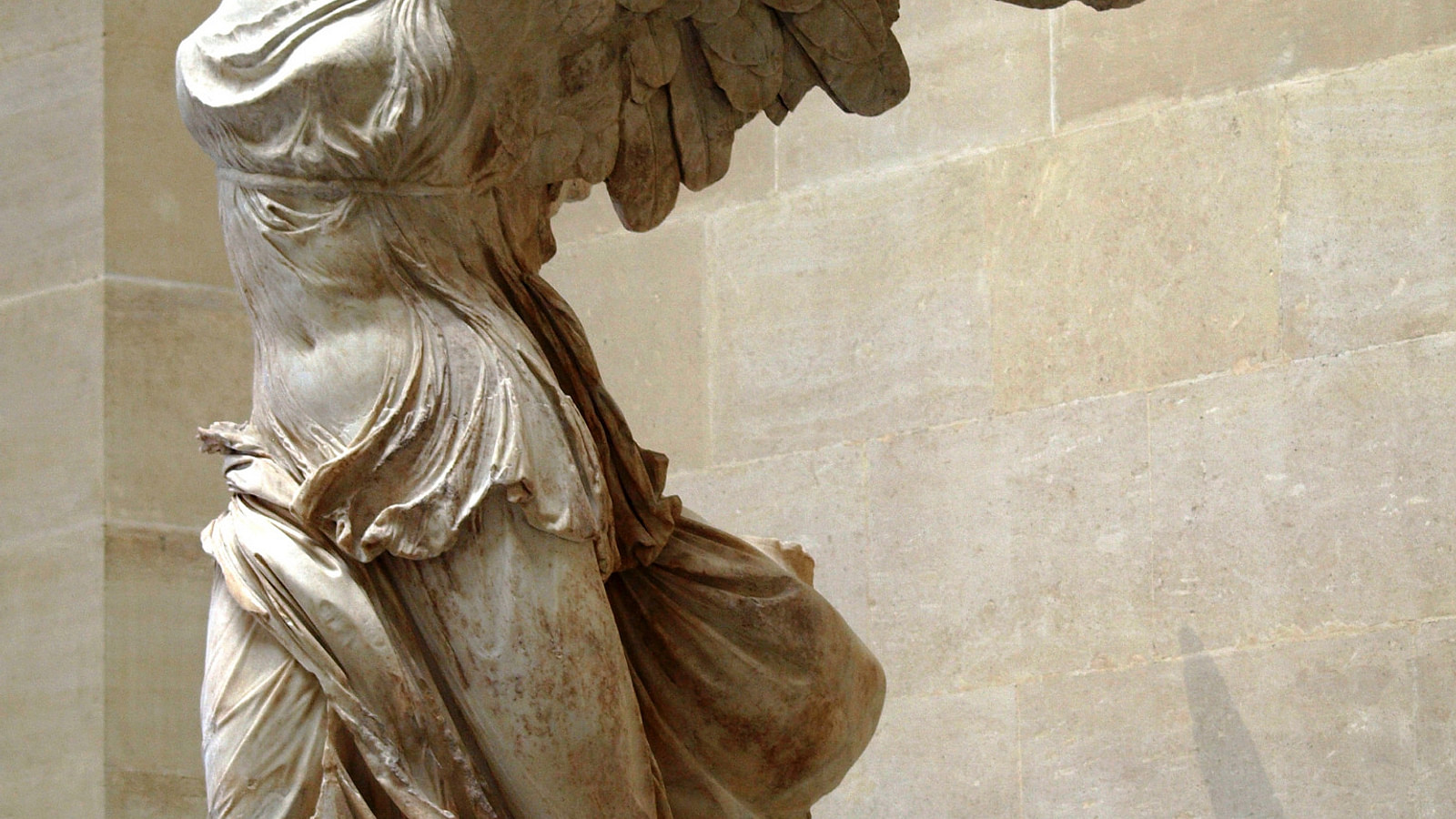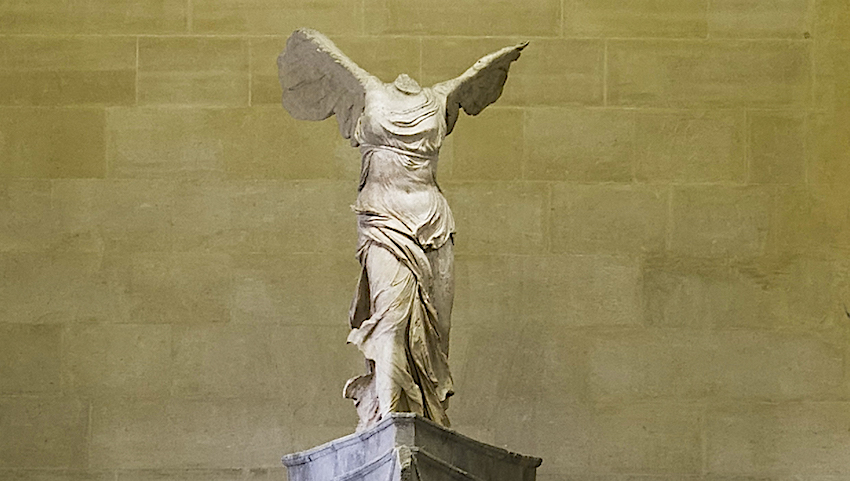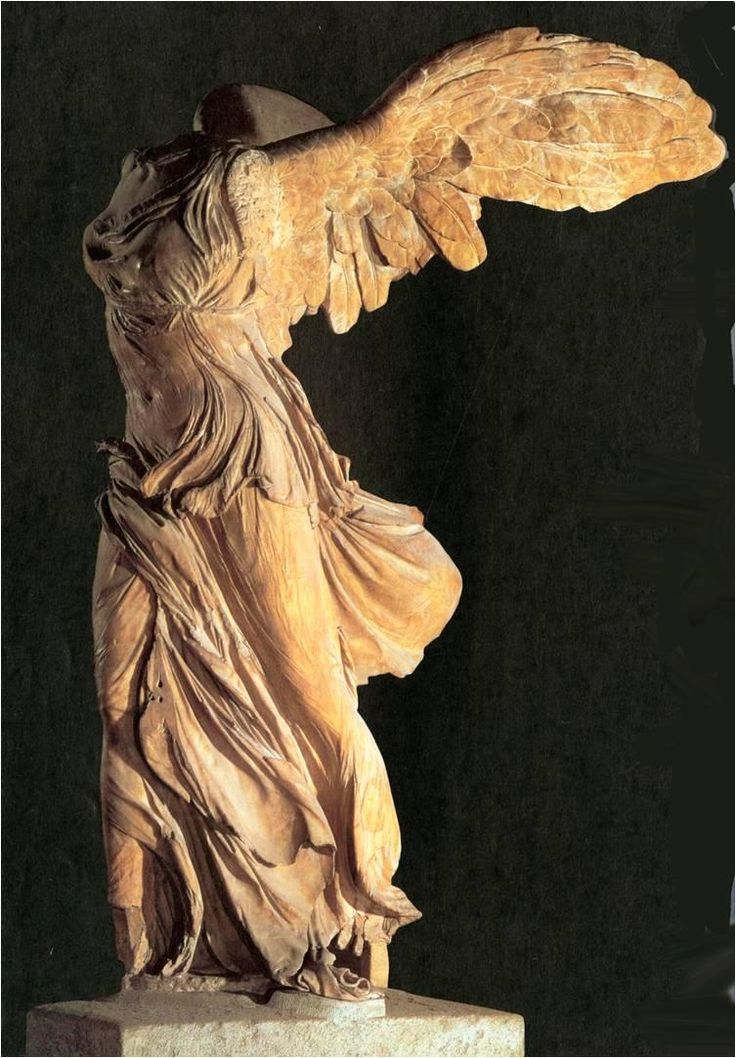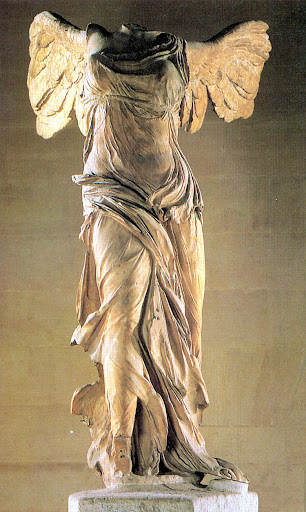The Winged Victory of Samothrace, also known as the Nike of Samothrace, stands as one of the greatest achievements of Hellenistic sculpture. Discovered in 1863 by French archaeologist Charles Champoiseau, this marble masterpiece has fascinated the world for over two millennia. With its dynamic composition and rich historical context, the statue remains a symbol of victory and artistic brilliance.
Historical Context and Symbolism
Dating to around 190 BCE, the Winged Victory was created during the Hellenistic period, a time of artistic and cultural flourishing following Alexander the Great’s conquests. This sculpture was likely commissioned to commemorate a significant naval victory, possibly by the people of Rhodes or Macedon, and was originally placed within the Sanctuary of the Great Gods on the island of Samothrace.

Positioned on a stone prow of a ship, the statue symbolized divine intervention in battles and celebrated human triumph. As the embodiment of Nike, the Greek goddess of victory, the sculpture would have conveyed both a religious and political message, affirming the favor of the gods in warfare.
Artistic Features of the Winged Victory
Dynamic Composition and Movement
One of the most striking aspects of the statue is its sense of movement. The forward-leaning posture, paired with outstretched wings, creates the illusion that Nike is descending onto the prow of a ship. This dynamic energy is a hallmark of Hellenistic art, which sought to evoke emotional responses and capture moments in motion.

Flowing Drapery
The intricate folds of Nike’s chiton (a tunic) and himation (a cloak) are masterfully carved, appearing as if blown back by the wind. These flowing garments cling to her body, accentuating her form while also suggesting the turbulence of the sea breeze. This interplay of light and shadow on the marble creates a vivid sense of depth and realism.
Missing Head and Arms
The statue, as it stands today, is incomplete. Nike’s head and arms are missing, and only fragments of her right hand have been recovered. Scholars believe that her right arm may have been raised in triumph, possibly holding a laurel wreath or a trumpet, reinforcing her role as a herald of victory.
Discovery and Restoration
In 1863, Charles Champoiseau unearthed the statue in fragments on the island of Samothrace. The remains included the marble figure and the ship’s prow, which served as the base. Over time, archaeologists pieced together the sculpture, carefully restoring it.

The statue was moved to the Louvre Museum in Paris, where it is now displayed at the top of the Daru staircase, creating a dramatic and inspiring centerpiece. Modern restoration efforts have focused on stabilizing the marble and enhancing its presentation, ensuring its legacy endures.
Cultural Legacy and Influence
The Winged Victory of Samothrace is more than just an ancient artifact; it is a universal symbol of triumph, grace, and artistic excellence. Its influence spans centuries, inspiring countless artists, sculptors, and designers. Positioned prominently in the Louvre, it draws millions of visitors each year, who marvel at its beauty and historical significance.

Beyond its aesthetic appeal, the sculpture reminds us of humanity’s enduring quest to commemorate achievement and connect with the divine. It stands as a bridge between ancient Greece and the modern world, capturing the spirit of a civilization that valued art, culture, and victory.
Conclusion
The Winged Victory of Samothrace is not just a relic of the past—it is a timeless masterpiece that continues to captivate and inspire. Through its dynamic form and rich symbolism, it speaks to the ingenuity of the Hellenistic period and the universal human desire to celebrate triumphs, both great and small.

